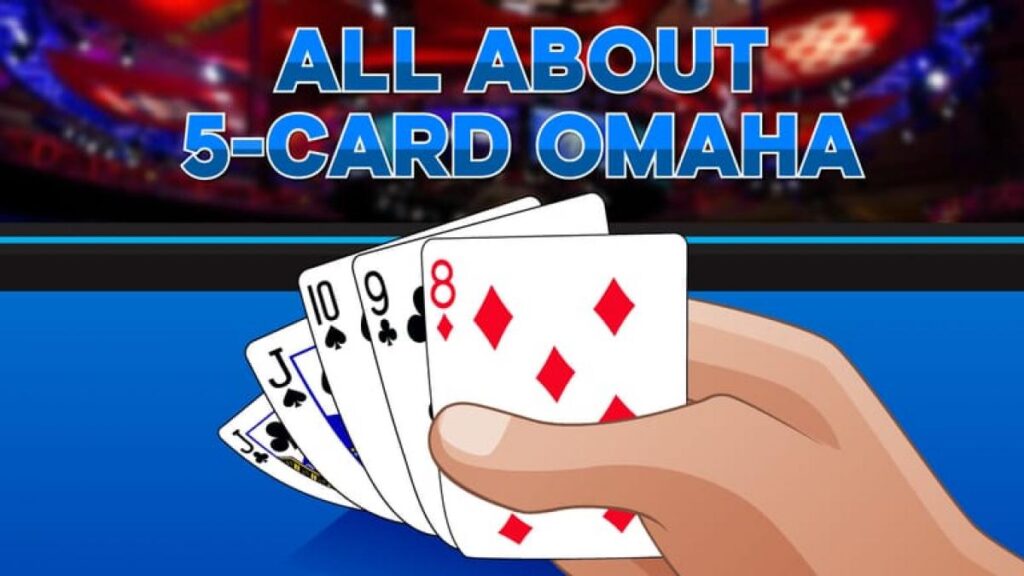Five-Card Pot-Limit Omaha (PLO) is a poker variant that’s rapidly gaining popularity. While it shares similarities with its four-card cousin, the addition of a fifth card dramatically alters preflop strategy. For players willing to delve into its unique dynamics, a significant edge awaits.
This guide will break down the essential elements of mastering preflop play in 5-card PLO, drawing on insights from the current state of the game.

The Evolving Landscape of 5-Card PLO
Currently, 5-card PLO is in a developmental stage reminiscent of 4-card PLO years ago. There’s a noticeable lack of widespread training materials and readily available solvers. This presents a golden opportunity for dedicated players. By investing time in studying and honing your game now, you can quickly surpass even experienced players who haven’t adapted to current study methods.
Hand Attributes: A Deeper Dive
The complexity of hand attributes is significantly magnified in 5-card PLO compared to 4-card PLO. The strength profiles and potential range of hands like pocket aces, broadway pairs, and connected hands are much broader. It’s crucial to recognize that a hand can be exceptionally strong or deceptively weak, and you must avoid building substantial pots with marginal holdings. Key preflop hand components to evaluate include high card strength, suitedness profiles, and connectivity.
Connectivity: Valuable, With Important Distinctions
Connectivity between your hole cards is undoubtedly valuable and important in 5-card PLO. However, there’s a critical distinction to be made:
- There is a massive gap in value between broadway/high connectivity and middling/low/wheel connectivity.
- Low connected hands see a dramatic drop in value because the cards involved are often dominated.
- Gappy hands (those with missing cards in potential straight sequences) lose their “nuttiness” and generally play poorly in multi-way pots.
The Increased Importance of Suit Awareness
Suit awareness takes on even greater significance in 5-card PLO than in the 4-card version. Consider these nuances:
- Be cautious when labeling a hand “double suited.” In 5-card PLO, this doesn’t guarantee two ace-high suits; you might have a much weaker jack-high suit, for instance, which performs poorly in multi-way scenarios.
- Holding four or five cards of the same suit significantly diminishes a hand’s value. This is because it becomes less likely you’ll make a flush and, importantly, get paid when you do.
- Tri-suited hands (three cards of one suit) are often strong candidates for three-betting, particularly if they include an ace-high suit. Without an ace-high suit, they are more typically calls.
- Single-suited hands (two cards of one suit) without an ace-high component can still be viable three-betting hands.
- Double-suited hands (two cards of two different suits) featuring ace-high suits are generally strong three-bets. However, even double-suited aces with poor connectivity around wheel cards might be better played as a flat call, especially from the big blind.
Navigating Hand Categories: Aces vs. Broadway Pairs
Understanding the relative strength of different hand categories is vital:
- Pocket Aces: The strength of pocket aces varies considerably. While double-suited aces are frequently three-bet (for example, around 98% of the time against a cutoff open), some configurations, especially those with weak connectivity around wheel cards, might just be a flat call from the big blind.
- Broadway Pairs: Pairs like Kings (KK) and other broadway holdings (QQ, JJ, TT) are often overplayed by inexperienced players.
- Against an open from the cutoff position, double-suited broadway pairs are only three-bet about 5% of the time. A significant portion (around 45%) are actually folds, a stark contrast to 4-card PLO.
- Broadway pairs that do not include an Ace are three-bet only about 1% of the time.
- Only the absolute most connected, double-suited broadway pairs (ideally Kings with high suits) are considered pure three-bets if they don’t contain an Ace.
- A king-high suit loses tremendous value compared to an ace-high suit in 5-card PLO. This gap is much larger than in 4-card PLO. Similarly, the disparity in strength between pocket Aces and other broadway pairs is more pronounced.
Adjusting to the Meta-Game
A common tendency in 5-card PLO games is that many players play far too many hands, deviating significantly from optimal (GTO) strategy. You’ll frequently encounter opponents with very high VPIP (Voluntarily Put Money In Pot) percentages, sometimes in the 40-53% range.
- Hands that might be break-even opens or play decently against a single opponent can become very problematic in multi-way pots, especially if they lack strong connectivity or nut potential.
- It’s crucial to adjust your preflop strategy based on the tendencies of the players at your table and how frequently hands are likely to go multi-way. When starting out, adopting a generally tighter approach is advisable.
Big Blind Defense: A Common Leak
Many players make the mistake of defending their big blind with too wide a range of hands. This was a common leak in the early days of 4-card PLO before solvers became prevalent. Solver analysis for 5-card PLO indicates that a significant portion of hands should be folded from the big blind (one example showed folds 66% of the time).
Summary: Key Takeaways for Preflop Mastery
Mastering preflop strategy in 5-card PLO requires a nuanced understanding of hand composition, with particular attention to the specific implications of connectivity and suitedness in the five-card format. It’s about learning to differentiate truly strong hands from those that are only superficially so (like some broadway pairs or low connected hands). Furthermore, successful play hinges on your ability to adjust your approach based on opponent tendencies and the probability of facing multiple opponents postflop. This demands dedicated study of these core concepts and a clear understanding of how they differ from traditional 4-card PLO.
